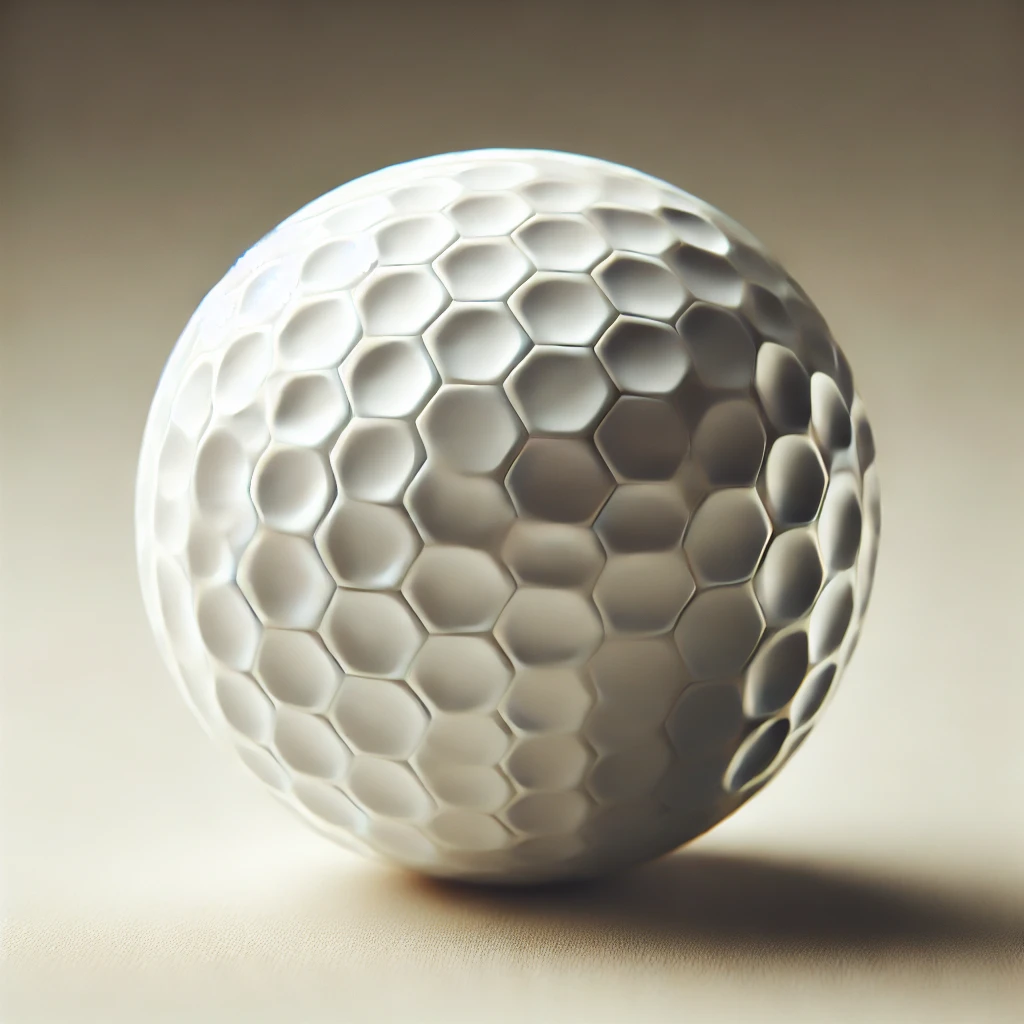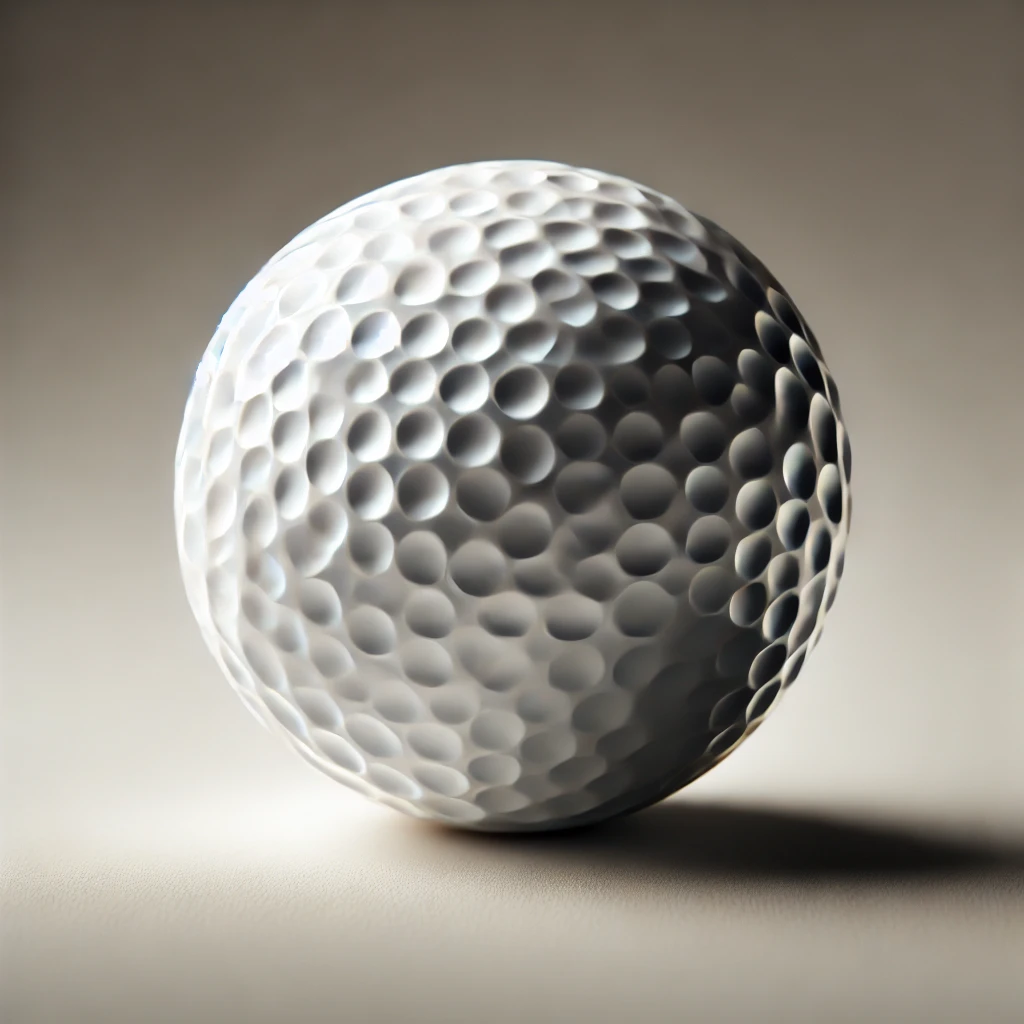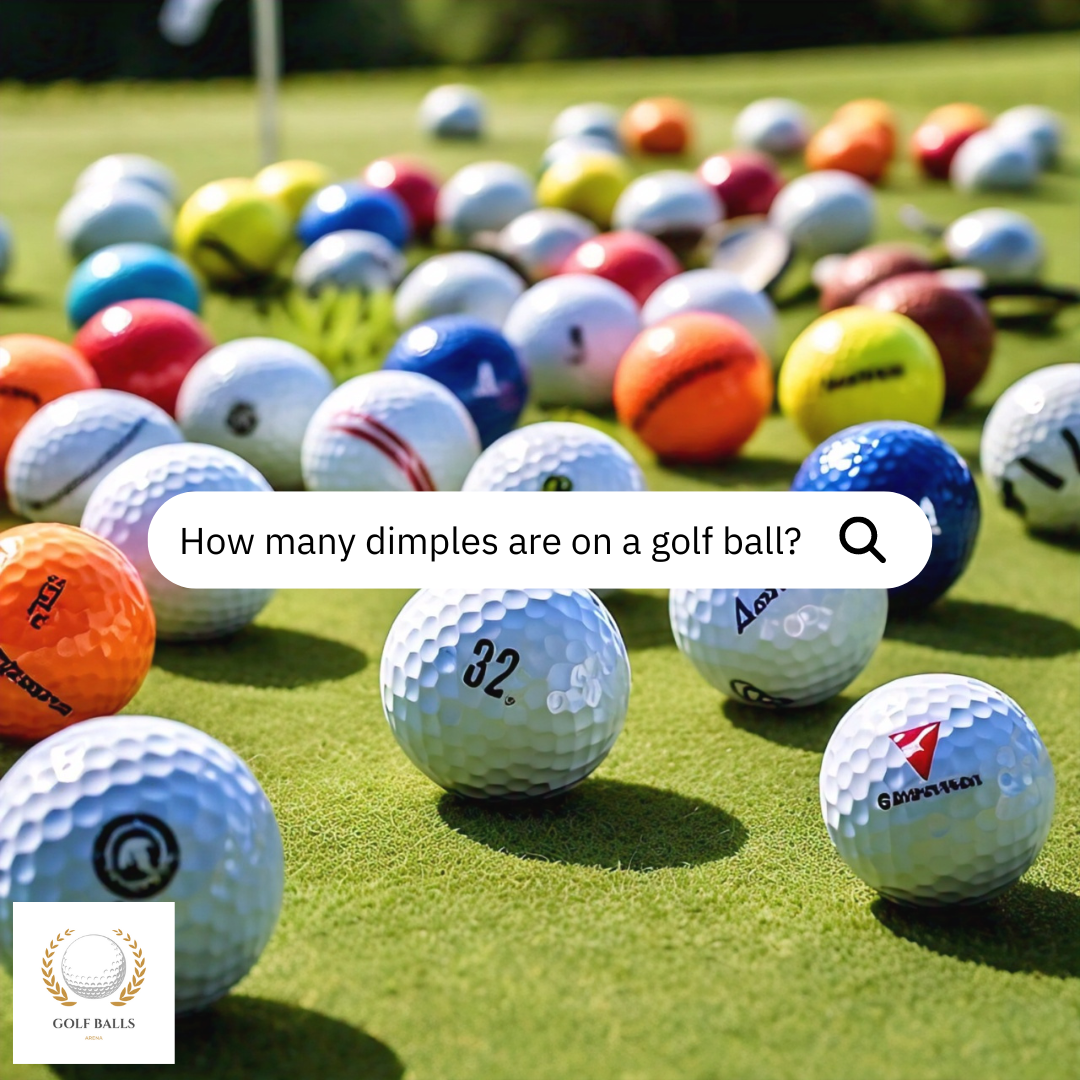How Many Dimples Are on a Golf Ball?
Frankly, it is surprising to admit that dimples on a golf ball not only contribute to its outer look but may also be vital for its function. The secret concealed beneath the dimples lies in their function to influence the direction and speed of the wind when it gets around the ball, thereby reducing the degree of drag and the distance that the ball can travel.
The Numbers Behind the Dimples
Standard golf balls have dimples of 300 to 500 and pitch apertures. This number can vary depending on who the maker of the ball is and how the ball is made. These dimples are crucial for a refined flight and enhanced accuracy as the ball will go higher and longer.
Here’s a quick look at dimple counts across some popular golf ball models:
| Golf Ball Model | Dimple Count |
| Titleist Pro V1 | 388 |
| Callaway Chrome Soft | 332 |
| TaylorMade TP5 | 322 |
| Bridgestone Tour B RX | 338 |
Why do golf balls have dimples?
The answer lies in aerodynamics. When you hit a golf ball, two main forces come into play: drag and lift.
- Drag is the resistance the ball encounters as it moves through the air.
- Lift is the force that helps the ball stay in the air, making it travel farther.
For distance, dimples perform a significant role because, without dimples, a golf ball would fly unpredictably and would not go so far. Smooth balls create more drag because they form a larger turbulent wake behind them, which slows them down. Dimples, however, help manage that turbulence. They make a thin layer of air that clings to the ball’s surface, reducing the size of the wake and, in turn, minimizing drag.
Additionally, dimples increase lift by enhancing the ball’s ability to spin. Spin generates lift, allowing the ball to stay airborne longer and follow a more controlled flight path. This combination of reducing drag and increasing lift is why dimpled golf balls fly farther and more accurately than their smooth counterparts.
How Many Dimple Patterns Are There?
Two main dimple patterns are used in golf balls, such as hexagonal or Spherical dimples, and each pattern impacts the ball’s aerodynamics and, therefore, its performance.
Hexagonal dimples:

Some newer models, such as Callaway’s Hex line, use a hexagonal pattern. This design aims to increase surface coverage and create more lift, enhancing distance and control.
Spherical dimples:

These are the traditional round dimples you’ll see on most golf balls. They create consistent airflow, which helps maintain a stable flight path.
History of Dimple Designs
We can trace the history of golf ball dimples back to the late 19th and early 20th centuries. Before dimples were introduced, golf balls were smooth, and players quickly realized that older, scuffed balls performed better. This led to the discovery that imperfections helped the ball fly farther.
William Taylor, in 1905, patented the first dimple pattern, which revolutionized golf ball design. After that, manufacturers perform research and experiments with dimple shapes, sizes, and patterns to optimize performance.
How Many Dimples Are Ideal for You?
The number of dimples on a golf ball may not seem critical for the average golfer, but it can influence performance. More dimples generally create more lift and more extended flight, while fewer dimples can reduce lift but may offer better control.
For beginners: If you’re starting, you may want to focus on balls with fewer dimples (closer to 300), which can offer more control and predictability.
For experienced players: If you’re more advanced and looking to maximize distance, you prefer a ball with a higher dimple count (closer to 400 or more) for that extra lift and carry.
Do Dimples Impact Spin?
The accidental upshots on a golf ball, thus, affect its wind on a fundamental level, impacting flight in functional use. The most exciting matter while striking a golf ball is that all the dimples create a layer of savage air that tries to cling to the ball’s surface.
This aggravation enhances the fact that it makes the ball, which would otherwise be slightly tricky, turn by having the air hold it all the more. Then, the golfers make a lift out of an indeed-struck shot. A lift is a natural flip that assists the ball to stay in the air longer and travel further.
However, top or back spin can affect the ball’s going by causing it to twist left or right. In addition, the dimples’ presence, type, and size should optimize this bend for various shots. For instance, a ball with additional expressed dimples might have a more significant opposite turn, therefore being perfect when precise accuracy is needed in certain shots.
However, a ball with less textured and more shallow dimples would create less curve, which might come in handy for producing dead-straight drives. Knowing what those dimples are and what they do for turn licenses golfers to choose the best ball in their respective playing style, thus helping to redesign their game together with distance and accuracy.
Conclusion: Why Dimples Matter
So, how many dimples are on a golf ball? The answer varies, but what’s most important is understanding how those dimples affect performance. From reducing drag and increasing lift to influencing spin and control, dimples play a vital role in every golfer’s game.
Next time you’re out on the course, take a moment to appreciate the engineering behind that little ball in your hand. Who knew something as small as a dimple could make such a big difference?
Choosing the right ball can enhance your performance, whether you are a casual player or a seasoned pro. And now, you’re equipped with the knowledge to find the golf ball that best suits your game!
FAQS
The size of dimples on golf balls typically ranges from 0.010 to 0.025 inches in depth. While they may look small, these tiny indentations significantly impact the ball’s aerodynamics. Different manufacturers fine-tune dimple size and shape to optimize performance factors like distance, control, and spin.
Choosing the right dimple pattern depends on your skill level and playing style. Spherical dimples offer a stable and predictable flight, making them ideal for beginners seeking control. More advanced players might benefit from hexagonal or other innovative dimple patterns that provide extra lift and distance. Personal testing and preference will help you find the best fit for your game.
Most golfers do not need to worry about the exact number of dimples. Generally, more dimples provide increased lift, while fewer dimples offer better control. For casual players, focusing on how the ball feels during play and its overall performance is more important than counting dimples. However, experienced players might want to experiment with different dimple counts to fine-tune specific aspects of their game.
Hi, I'm Austin Grey. I've been passionate about golf since 2005, and over the years, I've immersed myself in every aspect of the game. With nearly two decades of experience, I've developed a deep expertise in one particular area: golf balls. I created this blog to share everything I've learned about golf balls with fellow enthusiasts like you. Here, you'll find detailed reviews, insightful tips, and comprehensive guides to help you choose the perfect ball for your game. Whether you're just starting out or have been playing for years, I'm here to help you enhance your golf experience, one ball at a time.

